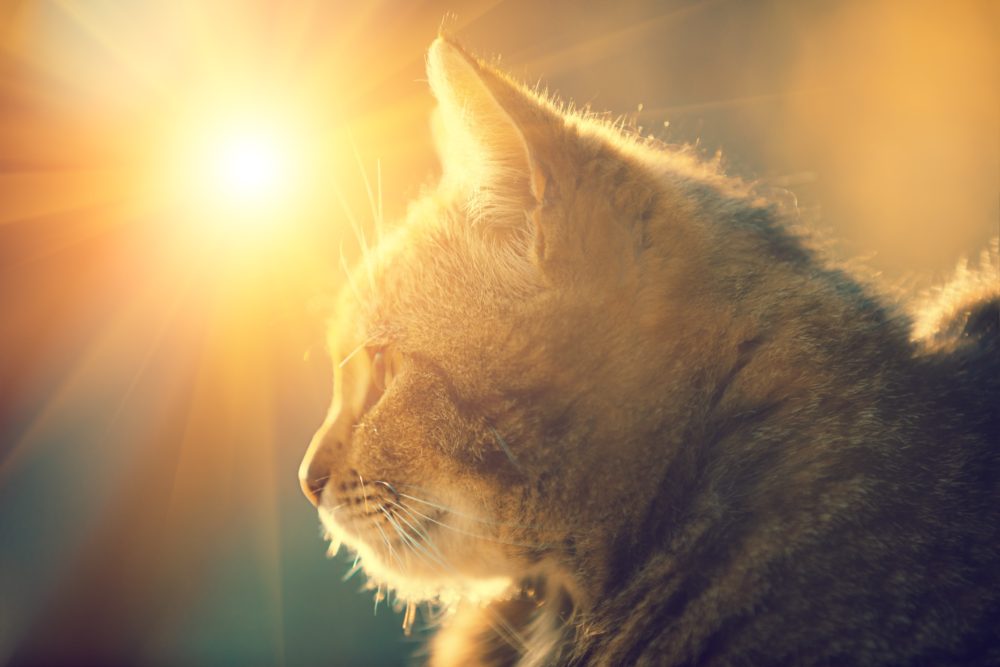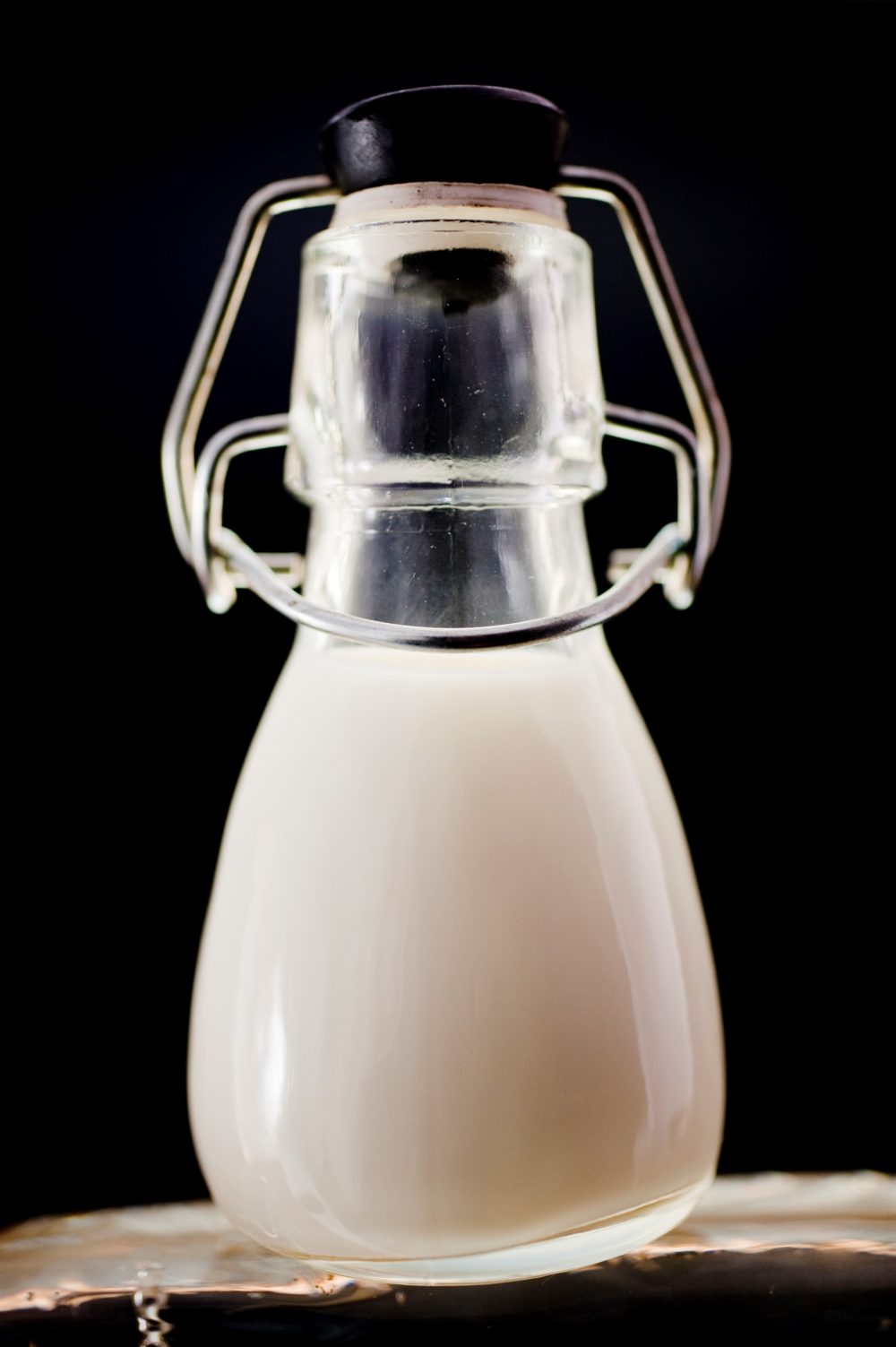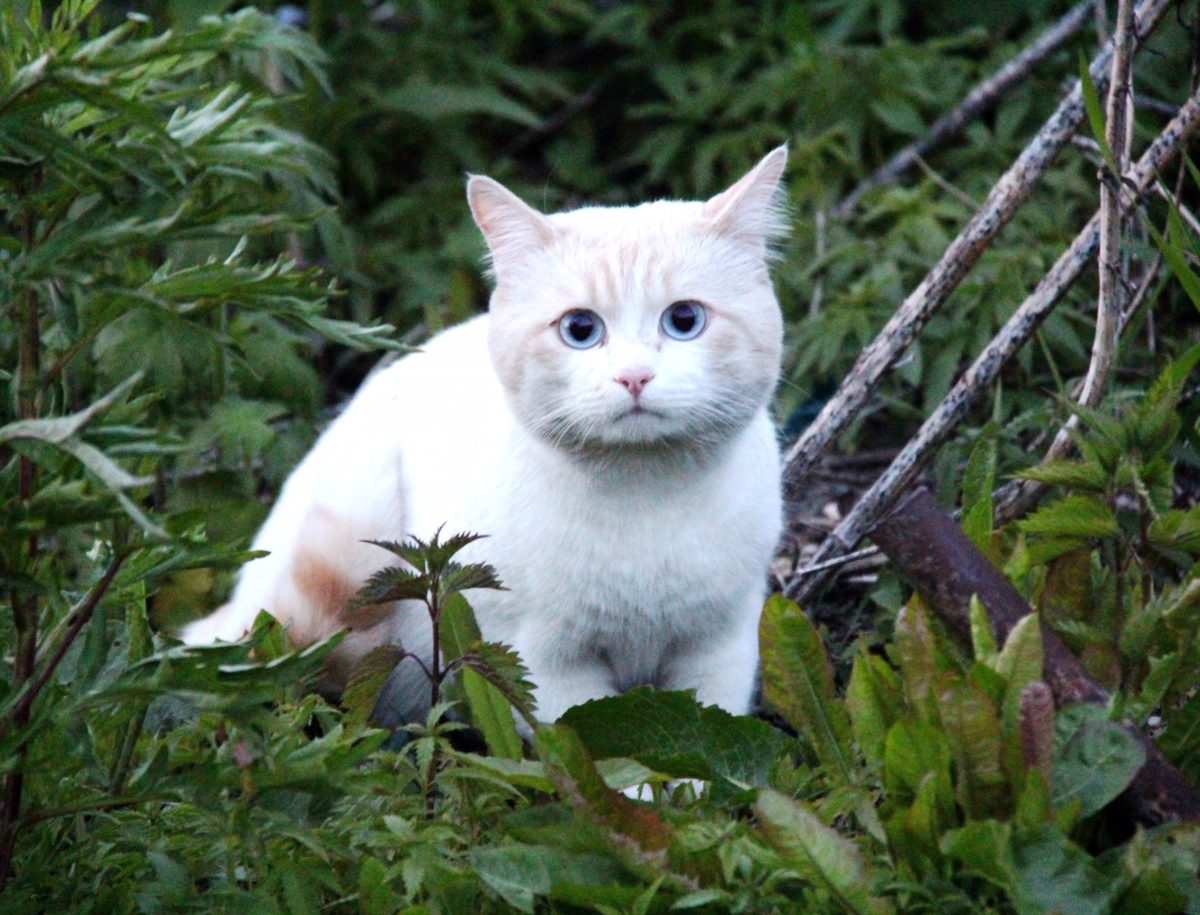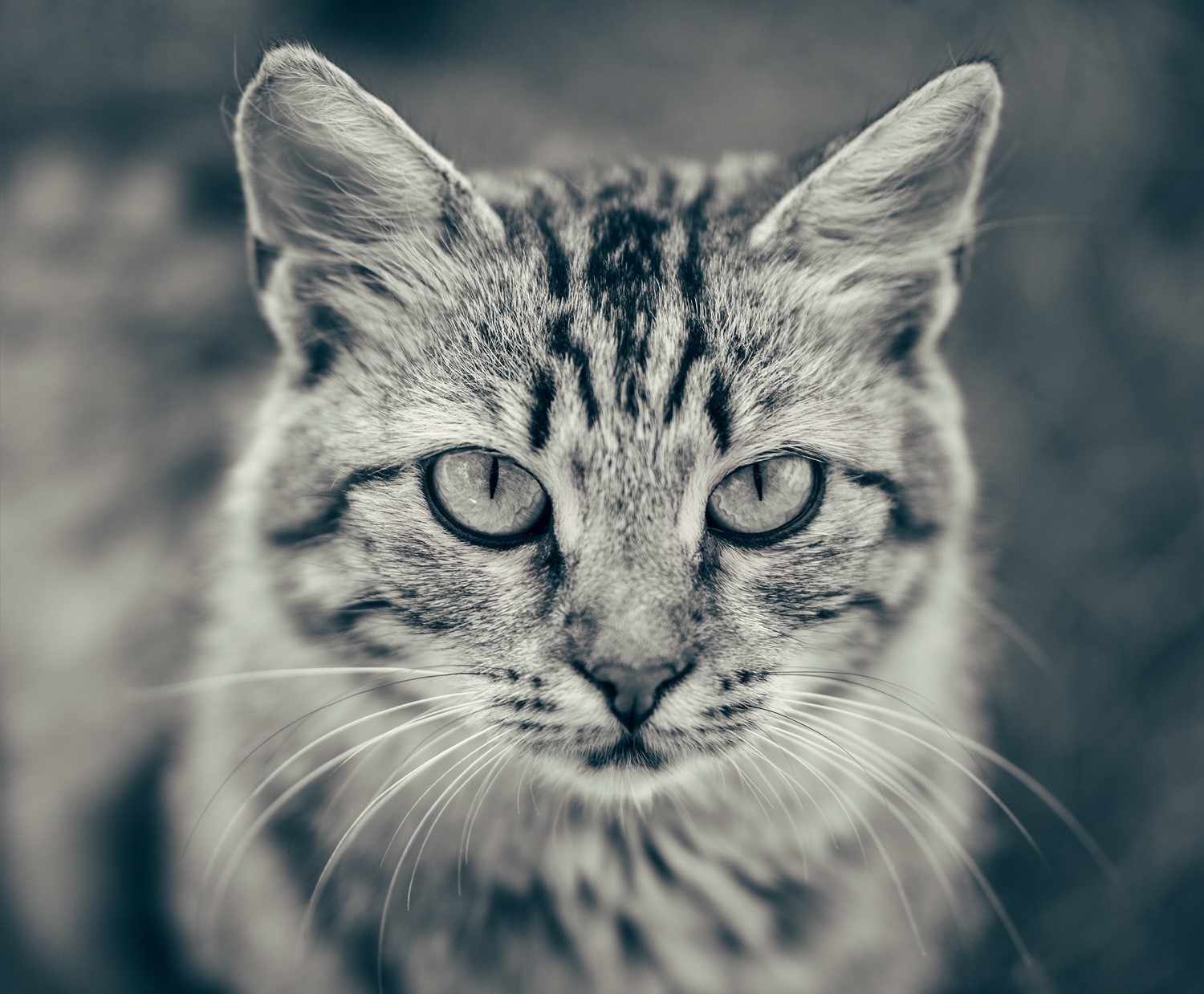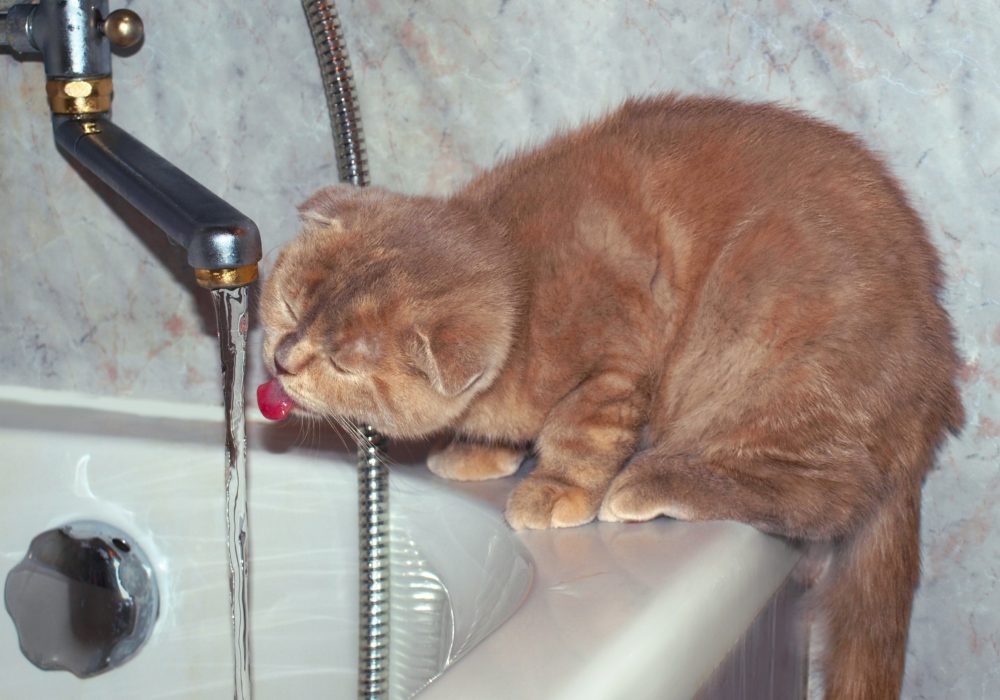
How much water does a cat need?
 Every living thing on earth needs water. Just like the humans, if cats do not ingest enough water, they may become severely dehydrated therefore water is essential to your cat’s health.
Every living thing on earth needs water. Just like the humans, if cats do not ingest enough water, they may become severely dehydrated therefore water is essential to your cat’s health.
How much water should I give to my cat?
The difficulty comes in knowing how much water your cat should drink because water consumption depends on several factors, including the size of your cat, the time of the year, and whether your cat’s diet includes wet or dry cat food. If like me your confused and concerned about your cat’s fluid intake, then you are not alone. Hopefully this article will help clarify some information and help you to ensure your cat has access to enough fluid.
A cat requires 44 to 66ml of water per kilogram of body weight per day (or 0.67 to 1 ounce per pound). This is according to ‘Feline behaviour for veterinarians’ second edition, B V Beaver, 2003. This fluid can come from moisture from food, drinking cat milk or directly from drinking water.
Dry food varies between 8 and 10% moisture whilst canned food can include up to 80% water. Therefore, it is very clear that if your cat eats wet canned food then desired water intake is much more easily achieved.
Here is a basic calculation that will help you calculate how much water your cat should be drinking in additional to its food.
| BOO – 6-month-old kitten weighing 5lbs (2.27kgs) | Her 100g pack of Whiskas kitten 2-12months contains 83.5% moisture (water). This is equivalent to 83.5ml of water. | If your 5 month old kitten is eating 3 pouches per day then he/she is already getting 250ml of water via the wet-food. | Typically, a kitten weighing 5lb should have a water intake of between 100 - 150ml therefore the wet food is providing adequate moisture. If your cat drinks cat milk, then this will count towards the intake too. |
| MISTY – 3 yr old weighing 8.8lbs (4kgs) | Her 85g pack of Sheba select slices in gravy contains 82% moisture (water). This is equivalent to 69.7g of water. | If your cat is eating 3 packs per day then he/she is already getting 209ml of water via the wet-food. | Typically, a 3 year old cat weighing 4kg should have a water (moisture) intake of between 176 - 264ml. When eating wet food Misty has adequate moisture from her wet food. |
| MISTY – 3 yr old weighing 8.8lbs (4kgs) | Misty sometimes prefers dry-food, and she will typically eat 60g of dry food every day. | Typically, dry food contains only 10% moisture (water) so her 75g of dry food will give her 6ml of water. | When on dry food, Misty needs to top up her daily intake of water by a substantial amount, between 170 and 258ml. |
What is dehydration in cats?
Cats naturally do not drink a lot of water and they can go for quite a while with no fluid. This traced back to their early hunting days where they would get most of their water from their prey such as mice and other rodents. But if this lack of water is constant then there is a risk of dehydration. Dehydration can occur in any combination of reduced fluid intake, increased liquid loss, or lack of water in the diet. Younger, older, immune-compromised, pregnant or nursing cats are much more susceptible to dehydration.
How to look for signs of dehydration
Most cat owners can tell when their cat is under the weather, but even so, it is common for a cat owner to be unaware that their cat is suffering from a mild to even severe case of dehydration.
Here are some common signs of dehydration to look for;
- Sunken eyes
- Tremors in the back legs
- Increased heart rate
- Lethargic and lack of normal physical activity
- Loss of appetite
- Not urinating (check the litter box)
- Dry flakes of skin
There are a couple of common tests you can do to check for dehydration
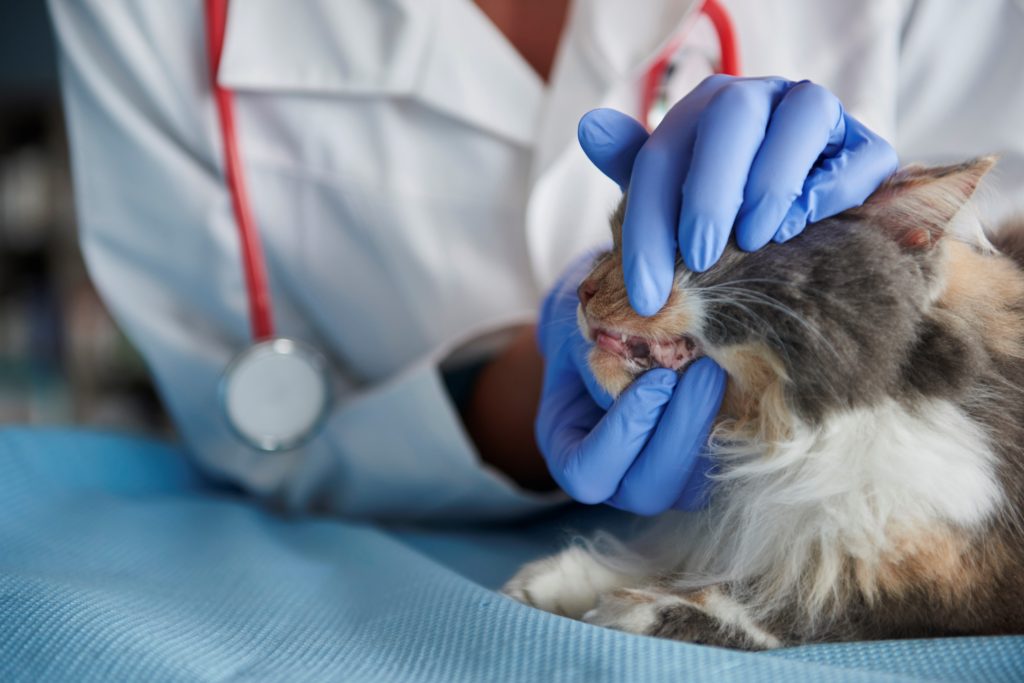 GUMS – Lift your cat’s lips while pressing a finger against her gums and then releasing. These gums, if dehydrated, may feel very sticky to the touch. Observe how long it takes for the natural colours to return. If gums are paler than normal than that means your cat is severely dehydrated.
GUMS – Lift your cat’s lips while pressing a finger against her gums and then releasing. These gums, if dehydrated, may feel very sticky to the touch. Observe how long it takes for the natural colours to return. If gums are paler than normal than that means your cat is severely dehydrated.
SKIN – The skin should return to its natural position quickly when lifted and then released. Raise the skin by the nape of the neck to see how quickly it shrinks back. If it doesn’t fall into place immediately then it means that your cat might be showing signs of dehydration. This is not, however, an accurate test for an overweight cat, as there is no natural elasticity to their skin.
Of course, if you are unsure and concerned about your cat then you should always seek expert advice and take your cat to the vet for a check-up, a cat suffering from dehydration can deteriorate quickly so if you suspect your cat is dehydrated and is not drinking then go to the vet.
Why does my cat tip over the water bowl?
There are several reasons why a cat may tip over the water bowl. It can obviously be very annoying for the cat owners to find water on the floor rather than in the bowl. There are some reasons that may help justify this behaviour;
Playful behaviour – Some cats might find the water bowl as an irresistible game. Water moves with the slightest touch of the paw and cats tend to learn that the more they splash the water the more it is bound to move. Cats who don’t receive enough stimulation and get bored, might also indulge in this sort of behaviour.
Paw dippers – Cats who don’t like to put their faces in the water bowl may dip their paws in the bowl and then lick it off their fur. If the water level is inconsistent, meaning it is filled to the brim one day and then completely empty the other day, the cat may also prefer to paw dip then. This behaviour may become a habit and then turn into enthusiastic play behaviour.
Reflections – Cats may see their reflection or some sparkle of light coming off the water’s surface and then bat at it, which, depending on how enthusiastic they are, can result in spilled water or an overturned bowl.
Safety – If your cat feels that sticking its head in the bowl may limit its vision or make it feel uncomfortable somehow, then it would rather prefer spilling the water on the floor and then licking it off. This could happen if the bowl is too deep, too small, too big, or just located in an unappealing place.
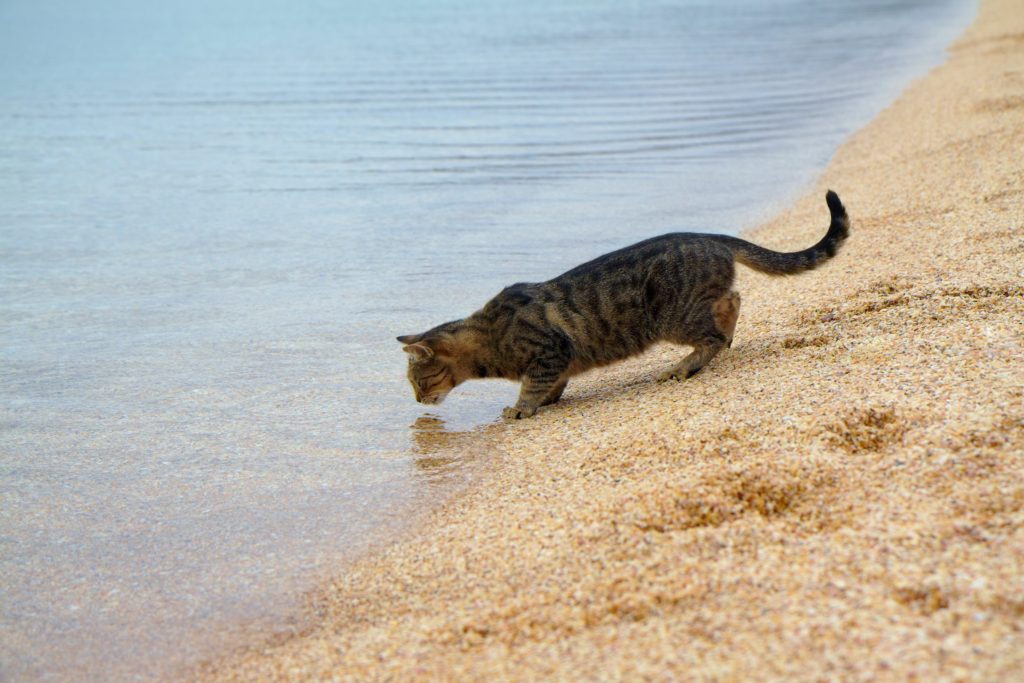 Why does my cat drink from everywhere but their water bowl?
Why does my cat drink from everywhere but their water bowl?
No one is really sure about why cats are so fussy about their water, especially when it comes to drinking from a water bowl. They would often want to drink water from the running tap but never from the bowl you placed out for them. Other than avoiding the bowl, your cat may also keep splashing the water with her paw or keep tipping the bowl on the ground, so she can drink from the floor.
There are some theories that would shed light on why your cat might not be drinking out of the bowl:
Water not fresh – All of us wish to drink fresh clean water and our cats do too. Your cat’s bowl may have been sitting around for longer than your cat would like, becoming stale and accumulating a film of hair and dust particles making it undrinkable.
Water temperature – There are times when your cat might either prefer lukewarm or cold water. They then seek out different sources for that water such as your shower or licking condensation off the window. Many cats don’t prefer warm temperature water.
Bowl shape and size – Sometimes the cats are just not comfortable with the way the bowl is shaped. It could be too deep or narrow, and the cats would not like it since their whiskers are too sensitive, which might hurt if they rub against the sides.
Taste – The water in your cat’s bowl may taste different depending on the material it is made from. Just like many humans have a preference for drinking from glass, your cat may prefer ceramic or stainless steel.
What can I do to encourage my cat to drink from the water bowl?
- Try changing the bowl itself entirely. Try water bowls of different shapes, sizes, and material to see what your cat prefers.
- Change the water in the bowl daily and rinse it thoroughly each time.
- Keep water separate from food as many cats don’t like the water too close to their food.
- Try a pet water fountain in your house if your cat likes fresh running water.
How can I get my cat to drink more water?
Switch to a mostly wet-food diet
Invest your money in canned food which typically contains a lot of moisture. It is the easiest way to get a higher quantity of water into your cat’s diet. If your cat does not eat wet food, try adding water or broth to its dry food and see if he will eat that although the consistency may become unappetizing to your cat. Even if your cat likes canned food, if needed, you can add water or broth to increase the liquid consistency. A cat on a wet food diet still needs access to fresh water.
Ice cubes in your cat’s food
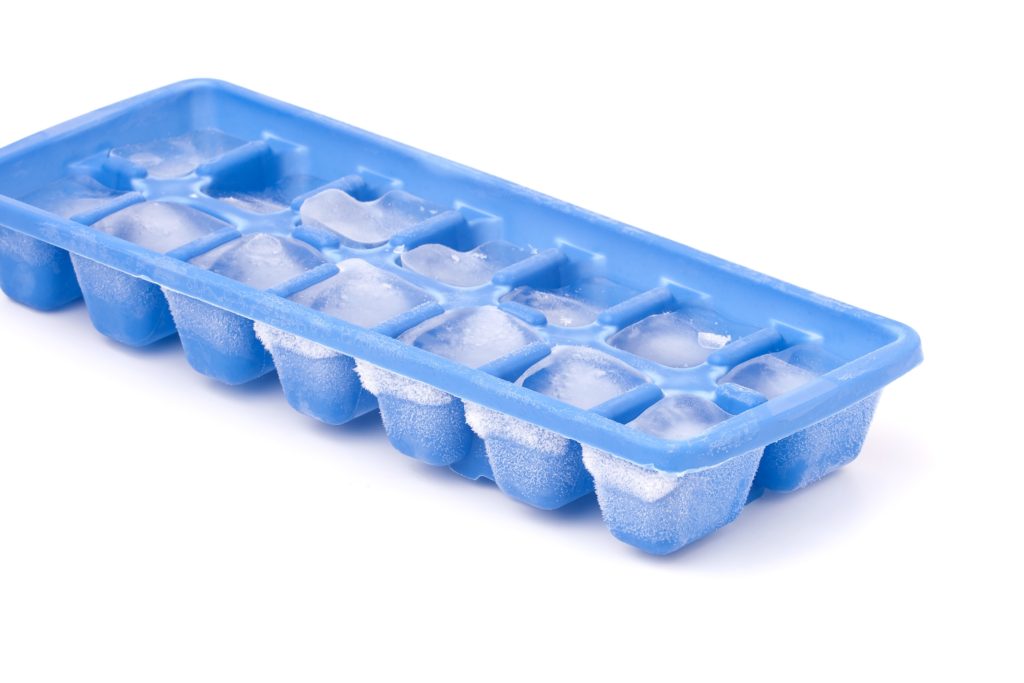 Adding ice cubes to cat food adds moisture and acts like a little treat for the cat. The cube takes on the food’s flavor and while your cat is licking the cube she is getting in water too. This especially works if your cat is a fan of cold water. Ice cubes in your cat’s water bowl also might make the taste of water seem more interesting to your cat, making her more inclined to want to drink it in the future.
Adding ice cubes to cat food adds moisture and acts like a little treat for the cat. The cube takes on the food’s flavor and while your cat is licking the cube she is getting in water too. This especially works if your cat is a fan of cold water. Ice cubes in your cat’s water bowl also might make the taste of water seem more interesting to your cat, making her more inclined to want to drink it in the future.
Serve small and more frequent meals
Eating tends to ignite thirst so the more your cat eats the thirstier she will get which would lead her to drink more water. Place water bowls all around the house Make it extremely easy for your cat to get a drink by offering multiple water stations throughout the house. Leaving a few strategically placed drinking bowls may keep enticing your cat to drink more water as well.
Make sure the bowls are refilled regularly
Nobody likes to drink stale old water, and your cat will not like stale water either. So, make sure to keep cleaning out the water bowl and refilling it with fresh water daily.
Multiple water locations
It is a good ideal to have more than one water bowl in different locations. This is particularly important if there are more than one cat in the home.
Run tap water
If your cat is such a big fan of tap water, then try making a practice of running the tap for a few minutes at various intervals every day. You can routine yourself or make reminders so that your cat is not left thirsty.
Purchase a water fountain
Running water fascinates most cats. A water fountain will ensure a constant supply of flowing water. It is important to keep the fountain clean just as you would with an ordinary water bowl. A raised edge placemat will keep any spills and splashes contained.
Glass or stainless steel bowls
Some cats simply do not like plastic bowls as they can leave a taste that cats don’t like. Try switching to glass or stainless steel bowls.
Flavour the water
Adding a little tuna juice or a little low salt chicken broth to the water may just entice them to drink.
Should I give my cat tap or filtered water?
Cats can be very finicky about water and about the taste of it. Since cats naturally have low thirst drives, water that tastes bad may discourage them further.
Giving them filtered water from the tap is the best option. A simple filter available attached to your tap will help remove the most objectionable of odors and tastes for your cat. You can also provide a drinking fountain which contains filters that remove chemicals from the water and keep it moving so it doesn’t grow bacteria.
Keeping cats hydrated in summer
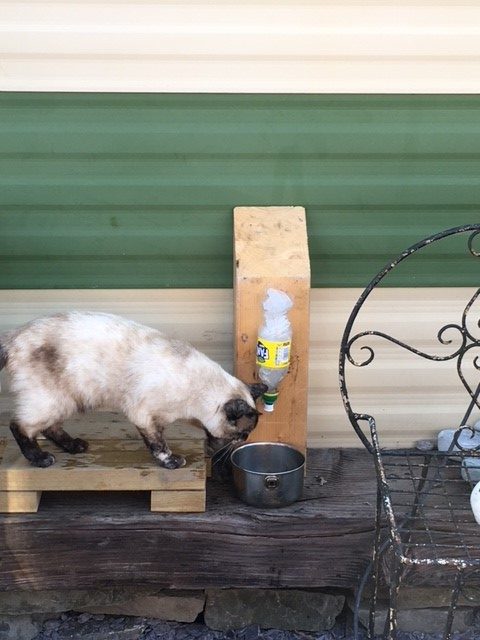 Weather can affect how much water your cat needs. On a hot summer’s day your cat is more likely to be thirsty. In hot weather ensure the water is kept cool by placing the water bowl in the shade. Check out our article on ways to keep your cat cool and hydrated in summer. In this article is our homemade ice / water dispenser for our cats which has been a huge hit in this year’s hot summer. Likewise in winter, if you have an outdoor cat ensure that water sources are not frozen.
Weather can affect how much water your cat needs. On a hot summer’s day your cat is more likely to be thirsty. In hot weather ensure the water is kept cool by placing the water bowl in the shade. Check out our article on ways to keep your cat cool and hydrated in summer. In this article is our homemade ice / water dispenser for our cats which has been a huge hit in this year’s hot summer. Likewise in winter, if you have an outdoor cat ensure that water sources are not frozen.
Giving water to cats does not need to be difficult. Clean, fresh and accessible are key, easy to achieve factors.
Other articles you may find of interest:
Can cats share a food bowl? Can cats share a water bowl?
Are ponds safe for cats? Can cats drink pond water?
